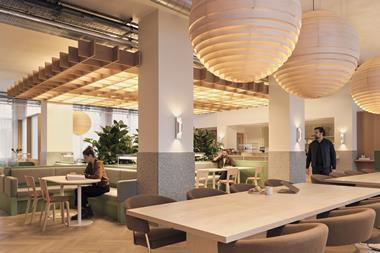Working from home is great and offers much-needed flexibility, but as many found in the summer, it is less enjoyable when a pool of sweat forms around the bottom of your chair.

With the summer heatwave sending many workers rushing back to the office for the balm of a properly air-conditioned workplace, it was a timely reminder of what a good office can and should provide: the crucible of a company’s culture and a platform for productivity.
It was also a reminder of the important role tech plays in the creation of a great workplace. Take air conditioning itself: the great glass-and-steel office towers of the past 100 years, invented at the turn of the 20th century and still going up today, would not be possible without air-con or, indeed, electric lifts. Air-con and elevators are so commonplace that we barely think of them as tech, yet how we miss them when they are on the blink.
The same will become true of digitisation. We read a lot about the great tech innovations of the shiniest new offices going up in London – from digital lockers to smart lifts to sensors that track air quality, energy consumption and movement around the building, making adjustments in real time.
As an evangelist for the potential of tech and the data that goes with it to improve organisations, all of this is undoubtedly most welcome. Yet there is something missing from this picture: most businesses are not based in brand-new offices, and many are not in London.
Too often the focus on the digitisation of the workplace is on the best buildings in the best locations, which of course command the highest rent and service charges that support the investment in cutting-edge tech. But what about the average office building on an average street in an average town? What does digitisation mean for these workplaces?
The reality is that only around 10% of the office footprint in this country is digitised. The vast majority of office stock is not, as landlords struggle to justify the return on investment. Part of the problem lies in a London-centric focus on ‘gadgetry’, for want of a better word, which creates the perception that digitisation is something for ‘elite’ buildings only.
But this misses the fundamental point of what digitisation of the workplace is about, which is using digital technology to manage the core functions of an office. It is less about sensors and digital lockers, as great as they are, and more about digitising a building’s core management services.
From key tracking and post-room management to a smooth and seamless visitor experience, from managing deliveries and room bookings to building repairs and maintenance, digitisation offers landlords an integrated and connected management solution, which ultimately provides tenants with a much improved experience.
Affordable solutions
Critically, far from being the purview of elite buildings, the smart building tech that enables these solutions not only exists but is affordable for the majority of building owners – the average buildings on average streets – and can have an enormous impact on the occupier experience.
Increasingly, more landlords around the country are beginning to catch on to the competitive advantage technology can bring, particularly in key regions such as the Midlands and the North West.
Part of the issue in pricing out regional landlords from the latest smart building tech is also down to the practice of charging tech per square footage, which often leads to higher costs. But there are alternative charging models and building owners may prefer to use more sustainable pricing structures that are more affordable, particularly across the regions.
So, while the innovation happening within the very best offices in London will continue to attract the headlines, the real revolution in digitisation is happening in buildings up and down the land – ordinary buildings on ordinary streets.
There is a long way to go (some 90% of building stock), but it is something to be excited about as there is enormous potential for change, as tech enables better workplaces that are more productive, efficient, sustainable, and so better for the planet.
It might be something of a quiet revolution, but digital transformation is fast becoming a critical factor in attracting tenants and must be a core pillar of any office project, whether in London or the regions.
Guy Windsor-Lewis is founder and chief executive of Locale






























No comments yet